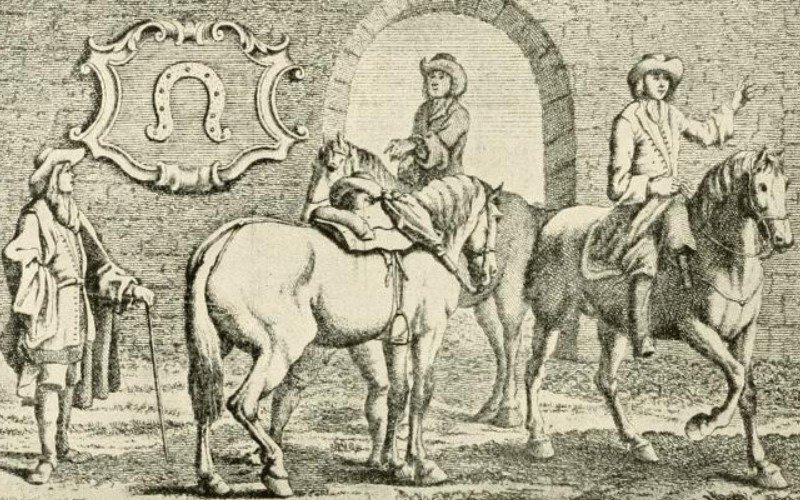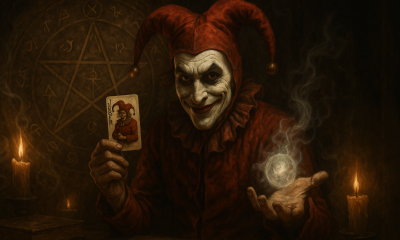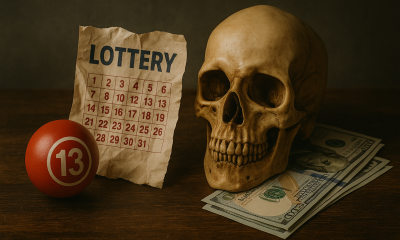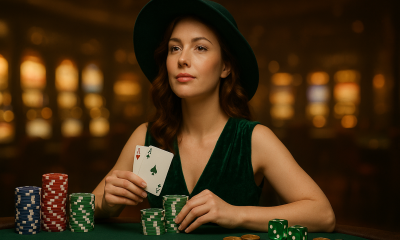Legends
The Origins of the Horseshoe: Gambling’s Most Iconic Symbol

One thing connects random symbols such as card decks, cherries, crowns, dice, card suits and horsehoes. They are all associated with gambling, and belong to the vast world of gambling iconography and symbolism. The horseshoe is one of the most commonly found symbols in the realms of gambling. You can find the symbol displayed in slot machines, landbased casino venues, and it frequently pops up in online casino games as well. But why exactly the horseshoe?
It is generally considered a symbol of luck. Your lucky horseshoe is like your rabbit’s foot or four leaf clover. There is definitely a superstitious edge to the horseshoe symbolism, and many a gambler may hold onto their horseshoes for extra comfort and as a potential lucky charm. On the other end of the spectrum, this imagery has also been used for marketing gains by the casino operators themselves.
Why is the Horseshoe Considered Lucky
Horseshoes are an ancient invention that were a necessity in horse husbandry and domestication. Working animals required protection on their hooves to withstand working conditions. Thus, the need to construct a protective shoe or layer was essential. The origin of horseshoes is disputed, but archaeologists found hipposandals that date back to the ancient Romans. Instead of nailing on these shoes, as is standard practice now, these sandals were strapped onto the horses’ feet. They were practical objects that served a pretty mundane purpose, yet even back then, horseshoes were no ordinary invention.
In a late 19th century archaeological find, four horseshoes with nail holes were discovered near an Etruscan tomb. Dating back to 400 BC, the cultural significance of the find was massive. Because it showed that even back then, horseshoes had some kind of superstitious or mystical symbolism. Nailed horsehoes were found that dated back to 900 AD. These iron horseshoes were crescent-shaped and had nail holes where they could be attached to a horse’s hooves.

The Horseshoe as a Talisman Against Evil and Bad Luck
Traditionally, horseshoes would be nailed into a horse’s hooves with 7 nails. The moon and the number 7 are widely accepted lucky charms and superstitious traditions. And then there was a Christian legend that helped bolster the role of horseshoes as a lucky charm. Saint Dunstan, who eventually became the Archbishop of Canterbury, worked as a blacksmith before becoming a man of the cloth.
According to the legend, during his days working as a blacksmith, the devil once entered his shop. The devil asked him to shoe his horse, and Dunstan, instead of doing so, nailed the shoe to the devil. This caused great pain to the devil, who then agreed that if Dunstan removed the shoe, the devil would never come back. Dunstan hung the horseshoe over his household to repel the evil spirit, and thus started the practice.
Now this ritual of hanging horseshoes on house doors may well predate the 10th century Saint Dunstan. But the tradition became more well known and mainstream with the account. By the 13th and 14th centuries, horseshoe making was widespread across Europe, and they were bought in large quantities. The role of the horseshoe as a protective charm as long been held in European cultures. It was also considered a lucky symbol, capable of catching good fortune and blessings.
Does Installing Horseshoes Hurt the Horses?
Before moving on, it is important to state the following. Nailing horseshoes onto a horse’s hoof does not cause the animal pain. The outer layer of the hoof has no nerve endings, and while the horses can feel the hammerings and vibrations, the shoeing does not cause them harm. Of course, if not done properly, it can hurt horses and even cause them injuries and infections later. Skilled farriers (that’s what the horse shoe fixers are called) can nail in the horseshoes without hurting the horse. It is similar to clipping your nails, you may feel them getting clipped, but it doesn’t cause you any pain.
Wild West Horseshoes and Gambling
In gambling circles, some may associate the horseshoe with the Wild West. After all, gambling was prevalent in the Wild West, and many games surfaced in the US around this time. The game most associated with the old frontier is poker, with legendary gunslingers and iconic figures favoring the game of cards. Wild Bill Hickok, Doc Holliday, and Wyatt Earp were just a few of the feared gunmen at the time who liked a good game of poker. Horses were an important part of daily life in the American West.
They were key for transportation, ranching, and essential for cowboys who used them to herd cattle. Rodeos also started to shape in the Wild West, as owning horses and riding skills were highly praised. And so it would be quite a typical part of the scenery. You would have a smokey saloon, with hard liquor, dark tables with card games, and horses feasting on hay outside. The horseshoe was a recognisable and important part of the Wild West imagery.

The Horseshoe Becomes an Iconic Symbol in Gambling
But the connection between gambling and horseshoes was arguably created a lot later. At least, at a mainstream level.
In 1951, Binion’s Gambling Hall and Hotel was opened on Fremont Street, Las Vegas. An Old Western themed casino, it was a revolutionary project at the time. Binion’s had comps points for gamblers, and raised the market table limits from $50 up to $500 for craps tables. But this was no exclusive VIP gaming venue, it had games for players of all budgets, and the comp points also extended to players with smaller bankrolls. But the biggest attraction, or feature, was the $1 million horseshoe display in front of the club.
The towering horseshoe stood at 8 feet tall, weighed 2,000 pounds, and held a million dollar notes behind a bullet proof display. In total, it had a hundred $10,000 notes, the largest USD denomination ever issued to public. These $10,000 bills were printed until the Second World War, and were extremely rare. The $1 million horseshoe display was an instant hit and served as the casino’s main marketing strategy to attract passersby.
Other Symbols in Gambling Iconography
Horseshoes can appear nowadays in Casinos as part of an extended Wild West or Old Frontier theme. But they can also be used in the same breathe as four leaf clovers, lucky pennies, dreamcatchers, and other symbols associated with luck. When the first slot machines were made, they introduced new symbols to the world of gambling.
The Liberty Bell, cherries, BAR, 7s and fruits became part of the casino lucky charm iconography. Naturally, as casinos became more widespread in the 20th century, and opened in more countries, the list of symbols only expanded. For example, in Asian countries, lucky charm symbols can include Koi fish, cats, Chinese dragons or even goldfish. As casino gaming, specifically slots, became more widespread, more symbols were thrown into the fray. Symbols that may have been regarded as lucky symbols in ancient countries.
Ancient Egyptian mythological symbols such as the scarab beetles, Ankhs, evil eye, and talismans. Or animals such as dolphins, or frogs/toads had symbolic meaning in luck and fortune. Horses too, have their own symbolism, with the horseshoe being their most widely known and appreciated associated icon.

Impact of Imagery and Superstitions for Gamblers
Ultimately, though, these lucky charms or superstitious beliefs have no bearing whatsoever on what happens in a casino game. It falls into the same category as blowing on dice, beginner’s luck, touching wood or lucky streaks. Casino games run on chance and probability. There are bound to be times when you win a jackpot or string together a winning streak when you may think luck is involved. But it is just a result of probability and variance that happens to fall in your favor.
That is not to say carrying horseshoes, rabbit’s feet, or other lucky charms is a bad thing. If it eases your nerves and adds to the entertainment factor, then they are more than welcome. Even the most pragmatic and strategic gamblers may have their own superstitions or eccentric rituals. We shouldn’t write them off if they give the players a boost in confidence or settle their anxieties.
The one thing you shouldn’t do is distort the realities of gambling. You can win, just as you can lose, and you have to be prepared for either scenario. Don’t get carried away with wins or take them for granted. Accepting losses is the hardest part of gambling, but something all players must learn to do. Only then can you enjoy gambling for what it is. A risky pastime that gives you great highs and lows, and an exhilarating experience in itself.














